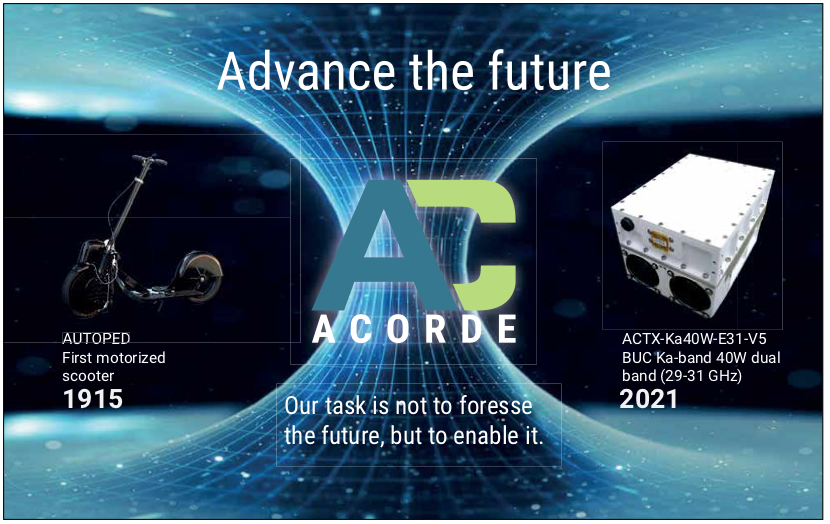Historically, space ground control operations evoke images of a bustling, fully manned room filled to the brim with expensive hardware. Every command would require the full attention of operators and an entire fleet of IT professionals to ensure each piece of hardware continued to run optimally.

While these images will likely always be the way Hollywood perceives ground operations, the landscape of satellite ground control is on the threshold of revolution. The Space Foundation issued a 2020 Space Report detailing the rapid growth of the space domain, with spacecraft deployments tripling from 2019 to 2020 and a 477 percent increase of communications satellite deployments within the same period.
Modernization of legacy spacecraft ground control and mission data processing infrastructure is mandatory to adequately increase capacity for the control and data processing produced by new space systems. The rapidly expanding commercial space market has overtaxed existing government and commercial ground assets, resulting in financial, time, and availability constraints within all areas of mission control.
The implementation of cloud applications is one of the latest technical trends in the industry to alleviate these common operational issues. Parsons Corporation strives to modernize mission solutions and offers hybrid cloud environments, allowing the customer to distribute and scale their mission across on-premise hardware and cloud deployments to balance their budget and mission capabilities.
Cloud environments enable immediate scalability for rapidly growing programs and industries, allowing flexibility and operational agility while ensuring continued support for rapidly multiplying needs. Integrating existing Satellite Operations Center (SOC) capabilities into cloud environments provides comprehensive benefits to all commercial and government satellite customers. With large upfront capital and future recapitalization hardware investments nearly eliminated, cloud- based ground control solutions adequately fit inside notoriously limited smallsat budgets. Cost savings also include the implementation and maintenance costs typically associated with hardware and software purchases.
These savings result in predictable budgeting as it is billed as a service, taking the stress out of hardware ownership — there is no need to worry about additional funds that may be needed due to unexpected hardware failures. Cloud environments level the playing field for start-up space ventures by removing the large capital barrier previously required for on-premise solutions, allowing them to focus on disruptive cloud applications to enter the market, remaining lean and agile.
Parsons enables increased capacity for satellite operations by offering customers a commercial antenna service that operates in a cloud environment, using globally distributed commercial antennas to communicate with spacecraft. The ability to access antenna time through a service allows customers to pay by the minute versus the burden of financing and maintaining their own antennas. Legacy stove-piped systems required programs to build entire infrastructures for each mission; however, customers can now leverage ground control providers who take advantage of standardized architectures that are enabled by cloud applications.
Automation is a critical aspect of successful cloud environments for ground control. With the help of software, such as Parsons’ Intelligent Resource Optimizer, fully automated event-based scheduling operations, human-machine collaboration, mission planning, what-if analysis, and continuous deconfliction capabilities are enabled. Automation increases system resiliency and capacity, supporting lights- out 24/7 operations that may have not been financially feasible before cloud capabilities were introduced.

In a world of COVID-19 precautions, the flexibility offered by automated cloud applications has allowed critical space missions to continue largely uninterrupted by a global pandemic that has otherwise debilitated countless industries internationally. Perhaps the most valuable aspects of cloud-based applications are the resiliency and redundancy they offer over traditional structures. Legacy operations require a minimum of two sets of hardware to serve as on-line backups in an instance of failure. In a cloud environment, redundancy is built in and allows operators to simply bring up another instance if a component were to fail.
This ensures continuous availability of systems and prevents the need for multiple sets of expensive hardware components. Redundancy benefits also include automatic data backups for mission critical information, the revenue-generating function of most space systems, allowing a level of safety and security for an order of magnitude less cost than legacy resources.
Test and validation are often overlooked in the smallsat world due to limited budgets but are becoming commonplace as cloud capabilities offer simulated environments that provide unlimited resources for test and validation. Parsons’ mission solutions leverage cloud applications to provide multiple solutions for test and validation. These solutions range from a Factory Compatibility Tester that tests and validates the RF interface to spacecraft before launch, to a common simulation environment which simulates the ground control system, antennas, and spacecraft, allowing test, checkout, and rehearsal of all mission applications, procedures, and staff operations prior to launch.
Parsons’ cloud environments for testing and validation provide ecosystems to prototype and validate technology while allowing operators and engineers to experiment with new technologies in a realistic environment without risking operational assets. To maintain pace with the explosive growth of the global space industry, it is often necessary to transition existing systems toward cloud architectures and take advantage of cloud-hosted applications that increase capacities while reducing costs and enhancing efficiencies.
The benefits of using cloud applications are exponential, improving competitive edge and redundancy while nearly eliminating significant financial, availability, and time constraints. Parsons fully supports the new age of space ground technology and has additional cloud-hosted applications being created throughout the year to support diverse customer and mission needs.

To learn more about Parsons’ leading space capabilities, please stop by Space Symposium booth #1036, Satellite 2021 booth #2018, or visit: hwww.parsons.com/capabilities/space/
Author Crystalyn Koch leads strategic communications for Parsons’ Space and Geospatial Solutions. She specializes in leveraging her marketing and communication skills with knowledge of Parsons’ space capabilities to develop relevant material and direct solutions to meet challenges faced by the space and geospatial market.


